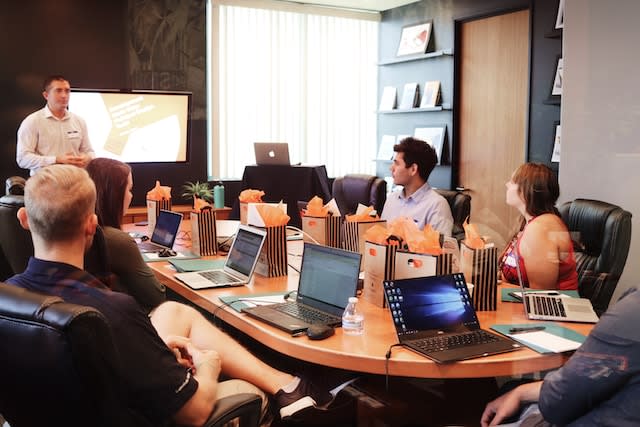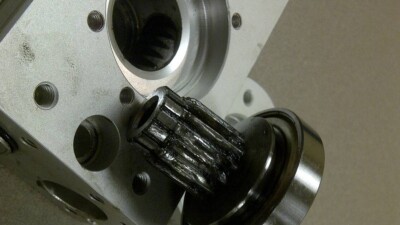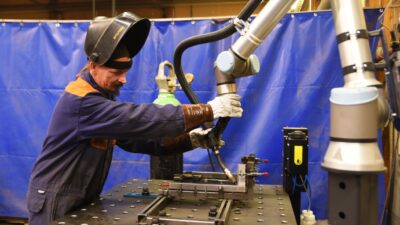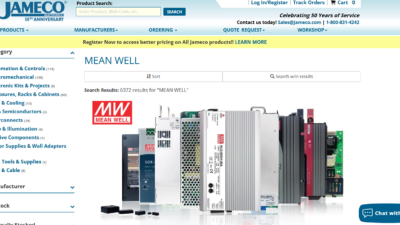In engineering, being excellent at presentations is an essential skill that impacts project outcomes as well as career aspirations.

The ability to convey complex ideas and technical information to a diverse audience is as critical as the technical skills themselves. Engineers and technicians often find themselves required to present their work to a variety of groups, each with different levels of technical understanding, interests and expectations. These groups range from fellow engineers and maintenance staff to production managers and executives with their own unique perspectives.
Each group requires a different approach to communication, and this must be part of your planning—it’s a job that can challenge even the most seasoned engineer. The success of these presentations can significantly impact project approval, teamwork efficiency, overall project success and even opportunities for promotion.
Presenter-Centered vs. Slide-Centered Approaches
There are a variety of presentation methods and selecting the correct approach is key. In a technical industrial environment, choosing between a presenter-centered and a slide-centered approach is a good starting point. Your choice should be based on audience, presentation content and the purpose of the presentation. An effective presenter combines approaches, adapting to the audience’s needs and the subject matter and there are many variations, ranging from creating a lecture to straight story telling.
Presenter-centered approaches focus on the presenter’s verbal communication and ability to engage with the audience, making complex topics accessible. In this approach, the speaker is the main source of information with visual aids used to supplement, enhance the topic or help focus the audience.
This approach is similar to the styles used in TED Talks, keynote speeches, motivational talks, training sessions and scenarios where the objective is to inspire, persuade, or engage on a personal level. Care must be taken in how details are delivered—too many specifics will not be remembered by the audience so follow-up or guidance material may be handed out for reference.
Slide-centered presentations rely primarily on visual aids and are used to convey detailed data and technical information. In this style, the slide is the focus and contains data specific to the subject. The presentation can rely heavily on graphic elements, charts and data tables with detailed calculations and specific design elements. The slides are the main way to convey data with the presenter supplementing delivery of the information. This style is good for academic, scientific and technical presentations where the audience expects to see solid data, detailed analysis, or specific findings. It commonly used in manufacturing environments for planning, analysis of events and project updates.
Presenting to Fellow Engineers
The most straight forward presentation is to fellow technicians and engineers with the focus on technical accuracy and detail. This audience appreciates in-depth analysis and data-driven conclusions. A slide-centered approach is effective here, utilizing detailed charts, graphs, and technical diagrams to support complex ideas. However, clarity remains paramount; the information should be organized logically, with each slide building on the previous one to create a coherent narrative. This audience values precision, so ensure that all technical data is up-to-date and accurately referenced.
While the presentation may be within the presenter’s confront zone, a group of your peers is as likely to be sceptical and critical of your ideas as they are to be receptive. This must be kept in mind. Arguments and answers to questions must be kept as accurate and logical as possible. If you don’t know the answer to a question, do not try and talk around the issue. Information can be provided at a later date. Most importantly, come prepared for the presentation so you can appear relax and confident.
Presenting to Maintenance Employees
Communication with maintenance staff and their mechanical and electrical repair team members requires a slightly different approach. It’s important to understand what your audience needs. Maintenance staff will be interested in how something works as opposed to why it works or the history of the design. These professionals value practicality and application. As with your peers, a slide-centered approach can be effective, but with the focus more on verbal explanation and less on detailed slides. Visual aids can be used to clarify points, but they should be straightforward and directly relevant to the audience. The presentation can include how engineering decisions affect maintenance work, focusing on operational functionality, safety and ease of maintenance.
Production Managers
Production managers are more focused on timely delivery to the customer with a focus on quality and service. There are times they need to bridge the gap between the technical and business aspects of manufacturing and engineering projects. When presenting to this group, balance technical details with their impact on the production process. These presentations should clearly articulate how engineering solutions improve efficiency (uptime or throughput), reduce costs or enhance production quality. Using a mix of presentation-centered and slide-centered approaches works well here, as there are times details are necessary. Visual aids are good to illustrate how technical changes impact production, while the verbal component of the presentation should tie these changes back to business outcomes. When presenting to this group, it should be understood that the engineer is not just presenting information but also selling concepts.
Presenting to Managers and Executives
When presenting to managers and executives, the focus must shift to strategic implications, business impact and return on investment. This audience is less concerned with technical specifics compared with how the project aligns with business objectives. As with the production manager, a combination of a presenter-centered and slide-centered approach is best in most cases. Top managers and executives typically wish to see high-level summaries, so graphs and charts are effective. The presentation must be concise, avoid technical jargon and directly address how the project contributes to the broader business goals.
It is also important to keep detailed information handy as backup. For instance, a high-level summary may make certain claims regarding cost or quality such that an executive may wish to see the data supporting these statements. The key here is to anticipate questions so you can respond quickly and accurately.
The ability to adapt presentation styles to suit different audiences is a valuable skill for any engineer. It requires not only a deep understanding of one’s own work but also an appreciation of the audience’s perspective and needs. By mastering this skill, engineers can significantly enhance their effectiveness in collaborative environments, leading to more successful project outcomes and career advancement.



